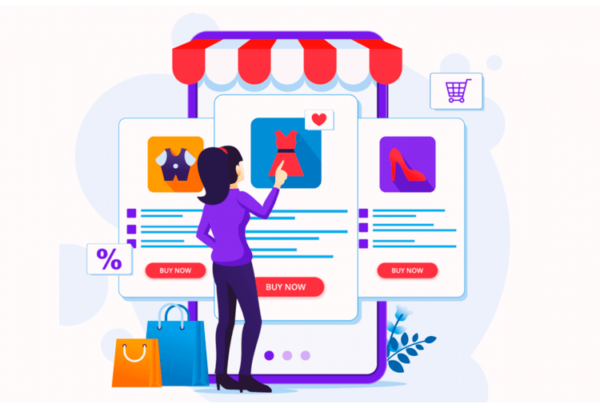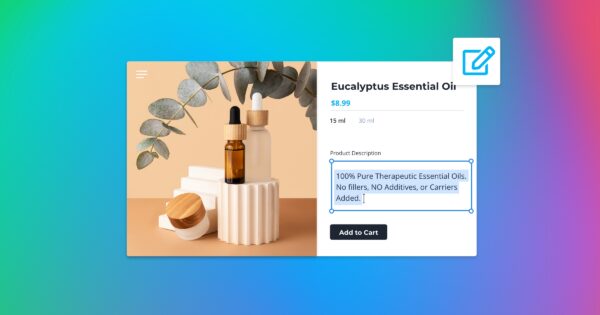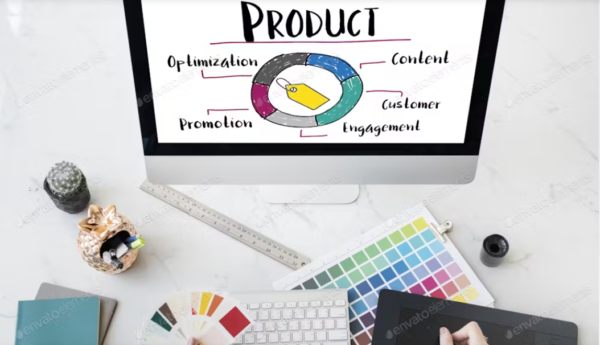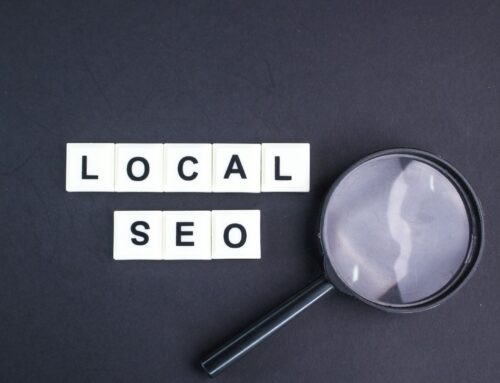Table of Contents
When it comes to e-commerce, product descriptions are essential. They are the key to converting visitors into customers. A well-written product description can increase customers’ trust in your brand, leading to a higher conversion rate. Product descriptions need to be informative, persuasive, and engaging. They should provide customers with all the necessary information about the product, including its features, benefits, and specifications.
E-commerce channels have made it easier for businesses to reach a wider audience and sell their products online. However, with so many online products, standing out from the competition is essential. A great product description can help you do just that. It can make your product more appealing to potential customers and increase the likelihood of a sale. Your product description should be tailored to your target audience. When writing your description, you should consider their needs, preferences, and pain points.
In addition to providing customers with information about the product, your product description should also establish trust. Customers need to feel confident in their purchase decisions, and a well-written product description can help with that. It would be best to be transparent about the product, including any potential drawbacks or limitations. This will help customers make an informed decision and reduce the likelihood of returns or negative reviews. By writing a great product description, you can increase your chances of success in the competitive world of e-commerce.

Crafting Effective Product Descriptions
In e-commerce, crafting compelling product descriptions is essential to attract and retain customers. A well-written product description can help you stand out from the competition and convert potential customers into buyers. This section will discuss some best practices for crafting compelling product descriptions.
The Role of SEO in Product Descriptions
Search engine optimization (SEO) is an essential factor to consider when crafting product descriptions. Including relevant keywords in your product descriptions can improve your search engine rankings and drive more traffic to your website. When selecting keywords, consider what words your target audience would use to search for your products. Incorporate those keywords naturally into your product descriptions, but avoid keyword stuffing, which can harm your SEO rankings.
Incorporating Storytelling and Sensory Language
In addition to incorporating relevant keywords, compelling product descriptions should also include storytelling and sensory language. By telling a story about your product, you can create an emotional connection with your customers and make your product more memorable. Sensory language, such as describing the texture or scent of a product, can also help customers imagine what it would be like to use the product.
Balancing Information with Persuasive Language
Balancing providing information and using persuasive language when crafting product descriptions is essential. Your product descriptions should include relevant features and specifications but also highlight the benefits of your product. Use powerful words to create a sense of urgency and persuade customers to purchase. However, be careful not to make exaggerated or false claims, which can harm your credibility.
Crafting compelling product descriptions is essential for e-commerce success. By incorporating SEO, storytelling, and persuasive language, you can create product descriptions that stand out from the competition and drive sales.

Visual Elements in Product Listings
When creating product listings for e-commerce channels, visual elements such as images, videos, graphics, and formatting play a crucial role in attracting and engaging potential customers. This section will discuss the two most important visual elements in product listings and how to use them effectively.
Using High-Quality Images and Videos
Product images and videos are the most important visual elements in any e-commerce product listing. They are the first thing potential customers see when they land on your product page, and they can make or break a sale. Therefore, it is essential to use high-quality images and videos that showcase your product in the best possible light.
When it comes to product images, use high-resolution photos that show the product from multiple angles. Ensure the pictures are clear, well-lit, and accurately represent the product. If possible, include lifestyle images that show the product in use, as this can help customers visualize how they might use the product in their own lives.
For videos, keep them short and to the point. Highlight the product’s key features and benefits and show it in action. Use captions and annotations to highlight important information and ensure high-quality video.
Effective Use of White Space and Formatting
White space is around the product image and text on the product page. It is essential in creating a clean, uncluttered look that is easy on the eyes. Effective use of white space can help draw attention to the product image and critical information, making it easier for potential customers to find what they are looking for.
Formatting is also essential in creating a practical product listing. Use clear, easy-to-read fonts and ensure the text is formatted to make it easy to scan. Use bullet points and lists to break up large blocks of text and highlight critical information.
High-quality images and videos and effective use of white space and formatting are essential in creating a successful e-commerce product listing. By following these guidelines, you can create product listings that are visually appealing, easy to read, and informative, helping to attract and engage potential customers and drive sales.
Maximizing E-Commerce Channel Potential
Optimizing your e-commerce channels can help maximize your sales potential and boost overall revenue when selling products online. Here are some tips on how to make the most of your e-commerce channels.
Optimizing for Different Platforms
Platforms have different requirements for product descriptions, images, and other content. For example, Amazon has specific product titles, bullet points, and description guidelines. On the other hand, Shopify allows more flexibility in design and layout.
To optimize your product descriptions for different platforms, ensure you understand the specific requirements and guidelines. This will help ensure that your product listings are visible to potential customers and provide the information they need to purchase.
Leveraging Social Proof and Reviews
Social proof and reviews can be powerful tools for boosting your e-commerce sales. Social proof refers to the idea that people are more likely to buy a product if they see that others have already purchased and enjoyed it. Reviews and testimonials can provide this social proof and help build trust with potential customers.
To leverage social proof and reviews, ensure you have a system for collecting and displaying customer feedback. This could include online reviews, product reviews, or testimonials. Prominently displaying this feedback on your website or product pages can help potential customers feel more confident in their purchase decisions.
In conclusion, optimizing your e-commerce channels and leveraging social proof and reviews can help maximize your online sales potential and provide a better customer experience. By following these tips, you will increase your visibility, traffic, and overall revenue by followers.
Understanding Your Audience
To create compelling product descriptions for your e-commerce channels, it is essential to understand your audience. By doing so, you can tailor your product descriptions to address specific needs and pain points and ultimately increase engagement and sales.
Creating Buyer Personas
One effective way to understand your audience is to create buyer personas. Buyer personas are fictional representations of your ideal customers based on market research and accurate data about your existing customers. By creating buyer personas, you can gain insights into your target audience’s motivations, goals, preferences, and behaviour.
To create a buyer persona, you must identify critical demographic and psychographic information such as age, gender, income, education level, interests, values, and lifestyle. You can collect this information using surveys, interviews, and social media analytics. Once you have this information, you can create a detailed profile of your ideal customer and use it to guide your product description strategy.
Targeting Demographics and Psychographics
Another way to understand your audience is to target specific demographics and psychographics. Demographics refer to statistical data such as age, gender, income, and education level. In contrast, psychographics refers to your audience’s psychological and emotional characteristics, such as values, beliefs, and attitudes.
By targeting specific demographics and psychographics, you can create product descriptions that resonate with your audience and address their needs and pain points. For example, if your target audience is predominantly female, you may want to use language and imagery that appeals to women. If your target audience is interested in sustainability, you may want to highlight the eco-friendliness of your products.
In conclusion, understanding your audience is crucial to creating compelling product descriptions for your e-commerce channels. By creating buyer personas and targeting specific demographics and psychographics, you can create product descriptions that resonate with your audience and increase engagement and sales.

Conversion Optimization Strategies
When it comes to e-commerce, optimizing your product descriptions is only half the battle. The other half is ensuring that your customers act and purchase. This section explores two critical strategies for optimizing conversion rates: calls-to-action and engagement, A/B testing and analytics.
Calls-to-Action and Engagement
A call-to-action (CTA) prompt encourages your customers to take a specific action, such as purchasing or signing up for a newsletter. To optimize your conversion rates, it’s essential to make your CTAs clear, compelling, and easy to find.
One effective way to increase engagement is to use powerful words in your CTAs, such as “exclusive,” “limited time,” and “free.” These words create a sense of urgency and encourage your customers to take action.
Another strategy is to use social proof to build trust and credibility. This can be done by displaying customer reviews, ratings, and testimonials on your product pages. When customers see that others have had positive experiences with your products, they’re more likely to purchase.

A/B Testing and Analytics
A/B testing is a powerful tool for optimizing conversion rates. It involves creating two versions of a product page with one key difference between them and testing which version performs better. This can be done with different CTAs, images, or product descriptions.
Analytics tools can also provide valuable insights into your customers’ buying decisions. By tracking metrics such as bounce rate, time on page, and click-through rate, you can identify areas for improvement and make data-driven decisions.
In conclusion, optimizing your product descriptions is just one piece of the puzzle regarding e-commerce success. You can increase your conversion rates and drive more sales by using effective calls-to-action and engagement strategies and leveraging the power of A/B testing and analytics.








